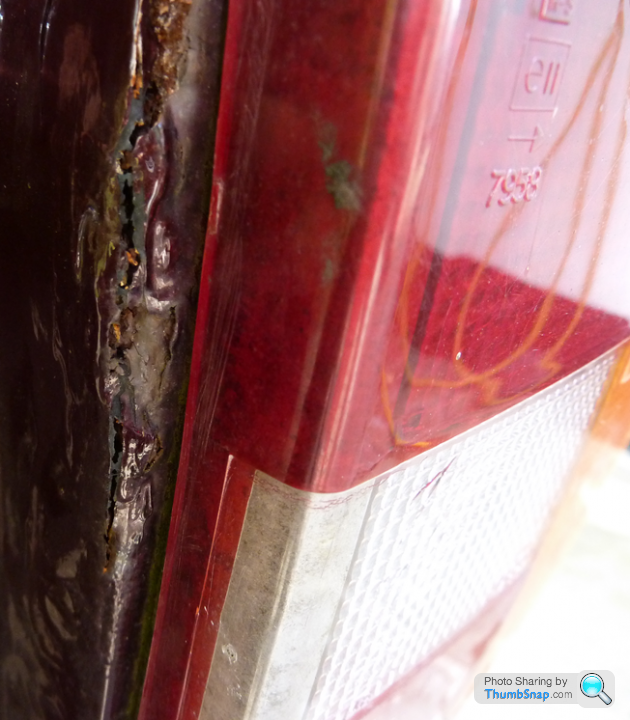Can I get away with using P40 filler to repair this?
Discussion

I have never used P40 except to fill cracks in fiberglass. Is it possible to make good job of filling this crack using P40? I have taken the light cluster off and most of the panel is pretty solid. It's just this corner. The corrosion is due to a failed lamp gasket (new gaskets ordered).
I would usually think about replacing the panel. It's a Classic Range Rover so it's bolts and pop rivets so no welding required. However I would need to remove an LPG tank to get to the rivets and that appears to be a bit of a faff as I don't understand how the LPG system operates. Welding is out of the question as well as the LPG pipe runs inside the panel.
Common corrosion area on RRC. Mine did it on both sides where the pop rivets mount to the rest of the body. Whilst I removed the quarter panels complete & welded new metal in - not difficult apart from a couple of hidden bolts at the front - I don't see a problem with what you propose as it's not structural.
I have LPG, but the tanks are under the sills & the only bit affected was disconnecting the pipe to the tanks from the filler.
I have LPG, but the tanks are under the sills & the only bit affected was disconnecting the pipe to the tanks from the filler.
Thanks for the reply. I guess it won't do any harm giving it a go. I have sill tanks as well as a donut tank in the boot (mounted like a second spare wheel) giving a capacity of 125 liters. I think all the tanks are of the electrically controlled fail close type but I don't understand how the system swaps between tanks. To remove the tank in the boot I think I would have to disconnect both the sill tanks as well.
Usual default position of unpowered electrically operated tank solenoid valves is closed.
Fill side on the tanks are non-return valves. Tank capacity limited by internal float operated shut-off valves.
I would expect tanks to fill more or less simultaneously with the fill side piping 'T'd together not as one-is-full-the-next-one-fills and the supply to the vapouriser simultaneously as opposed to tank by tank.
Be an idea to have a crawl underneath & familiarise yourself with the pipe layout.
Fill side on the tanks are non-return valves. Tank capacity limited by internal float operated shut-off valves.
I would expect tanks to fill more or less simultaneously with the fill side piping 'T'd together not as one-is-full-the-next-one-fills and the supply to the vapouriser simultaneously as opposed to tank by tank.
Be an idea to have a crawl underneath & familiarise yourself with the pipe layout.
Gassing Station | Bodywork & Detailing | Top of Page | What's New | My Stuff



